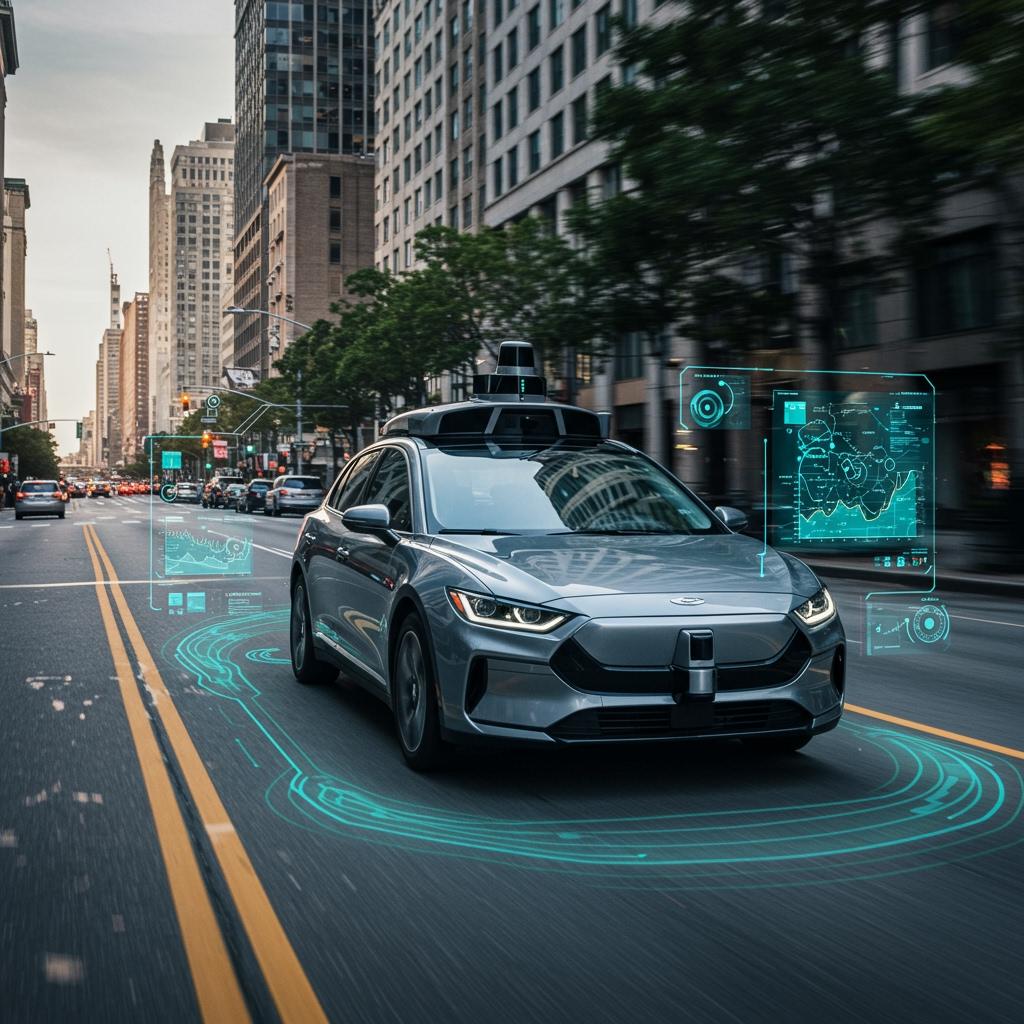How Self-Driving Cars Learn from Millions of Miles of Data
 Self-driving cars use sensors and data collected from millions of miles to learn how to navigate safely.
Self-driving cars use sensors and data collected from millions of miles to learn how to navigate safely.
How Self-Driving Cars Learn from Millions of Miles of Data
By Peter Teoh, Science Writer
Imagine a car that can drive itself—no hands on the wheel, no eyes on the road. Sounds like science fiction, right? But self-driving cars, also called autonomous vehicles, are becoming a reality thanks to advanced technology and lots of data.
Self-driving cars learn to navigate by collecting and studying data from millions of miles driven. They use a mix of sensors like cameras, radar, and LiDAR (which is like radar but uses lasers) to “see” the world around them. This data is then fed into powerful AI algorithms that help the car understand and react to everything on the road—from other cars and pedestrians to traffic lights and unexpected obstacles.
But how exactly do these cars learn from so much data?
Learning from Experience
Just like how you get better at something by practicing, self-driving cars improve by “driving” over and over again, collecting data each time. Researchers have driven cars equipped with sensors repeatedly along the same roads—sometimes dozens of times—to capture lots of different driving conditions. This includes sunny days, rainy weather, snow, and even fog. By seeing the same location in many different situations, the car’s AI learns to recognize objects and make better decisions even when conditions change[1].
The Role of AI and Neural Networks
At the heart of these cars is artificial intelligence, especially neural networks. Think of neural networks as computer systems inspired by the human brain—they learn patterns by analyzing huge amounts of data. When a self-driving car encounters something new, the neural network tries to figure out what it is based on what it has learned before. For example, a tree might look like a pedestrian from far away, but after getting closer and collecting more data, the AI learns to tell the difference[1][2].
Supervised and Unsupervised Learning
AI training comes in two flavors:
-
Supervised learning: The AI is given labeled examples, like pictures tagged as “car,” “pedestrian,” or “stop sign.” This helps the system learn to recognize these objects correctly.
-
Unsupervised learning: The AI looks for patterns in data without labels, helping it spot unusual or new situations it hasn’t seen before[2].
Processing Data on the Go
Self-driving cars can’t wait minutes to decide what to do; they need to react instantly. So, they process much of the data right inside the car using powerful onboard computers. This helps them quickly detect dangers and make split-second decisions like braking for a sudden obstacle or changing lanes safely[3].
Sharing Knowledge Like a Digital Word-of-Mouth
Self-driving cars don’t just learn on their own—they also share what they learn with other cars. Researchers are developing systems that let cars pass along their AI knowledge to others nearby, almost like sharing tips among friends. This means a car driving in one city can help another car miles away learn about road conditions faster[4].
The Road Ahead
Although fully self-driving cars for everyone are not yet common, companies are testing them in cities and on highways. As the technology improves, these cars will rely more and more on the huge amounts of data collected worldwide, making roads safer and driving easier for everyone[5].
Side Notes
- LiDAR: A sensor that bounces laser light off objects to create 3D maps of the environment.
- Neural networks: Computer algorithms modeled after the human brain that help AI learn patterns.
- Edge computing: Processing data close to where it’s collected, like inside the car, instead of sending it far away.
Trending Now
- AI in Everyday Life: How machine learning is changing gaming, music, and social media.
- Electric Cars: The rise of clean energy vehicles and how they differ from self-driving cars.
- Space Tech: New missions to the Moon and Mars that use autonomous robots.
Self-driving cars are a perfect example of how data, AI, and smart engineering come together to create the future of transportation. As you keep learning about science and tech, who knows? Maybe you’ll be the one programming the next generation of these amazing vehicles!